By Jeanny Lim

Flat roof syatem on top of the Schletter building (Photo by Schletter)
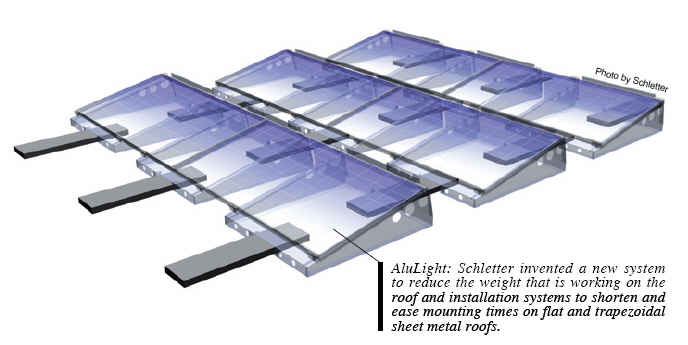
Could you give our audience a brief overview of yourself as CEO of Schletter?
My name is Ludwig Schletter and I’m the CEO of the Schletter in Germany. The company has been founded by my father. I am still grateful for his teaching efforts in metal engineering and business management which enabled me to turn Schletter into today’s market leader in solar mounting systems.
In the beginning of my career, I successfully completed a three year apprenticeship for being a professional locksmith. This enables me to see beyond business and relate to my customers and their problems regarding metal engineering. I was literally raised in this company, so my heart and soul is tied to it. I experienced the huge transformation we have been going through in the past decade starting off as a small size business for metal production and turning into this medium-size international firm with several business sectors all interlinked with its environmental approach.
At the moment I live in Haag in the south of Germany with my wife and my four children.
Why has Schletter chosen to enter the PV Market?
Especially during the 1990s the discussion about finding alternative energies became omnipresent. Because we are based in the metal industry, the idea of concentrating on solar mounting systems arose. We were hoping to establish a new reliable market for our company’s future while at the same time helping to change the market situation towards a more modern and environmentally aware economy.
What is unique about Schletter’s solar mounting systems?
First of all, our focus lies on the production and development of solar mounting systems. We are firm believers in the success of quality. Our quality standard can be maintained by specific testing and adapting our systems to an ever-changing market. Thereby, we are able to constantly widen the range of our products, immediately react to our customers’ needs and offer competent advice. Up until today we have gained over 10 years of experience.
Secondly, due to the confidence in our products we offer a 10-year warranty which we attach to our main company and never separated the solar system production from it opposed to many other competitors. To us, loyalty to our customers and confidence in our products are self-evident.
And thirdly, we offer a modular system which enables the customer to ease the mounting in general, helps us to provide on-time deliveries and shortens mounting time. In sum, we contribute to a more favorable system by developing quality and user-friendly products.
What are some of the important considerations when choosing a solar mounting system?
First of all, we need to distinguish between free-field, pitched roof and flat roof installations. Free-field systems can only be installed after soil analysis tests have been performed. Those shall prove if the system can withstand geological and meteorological conditions in the significant area in the long run.
For roof installations, all buildings need to be checked for their statics, the condition of the roof and roof covering. In order to find the suitable system for every roof, we work with special structural analysis software which takes into consideration the overall weather conditions, e.g., wind, snow or rain with respect to the statics of the house.
There are many varieties in order to fit all sorts of situations. Our technical support team is familiar with all arising problems and will assist in the planning process.
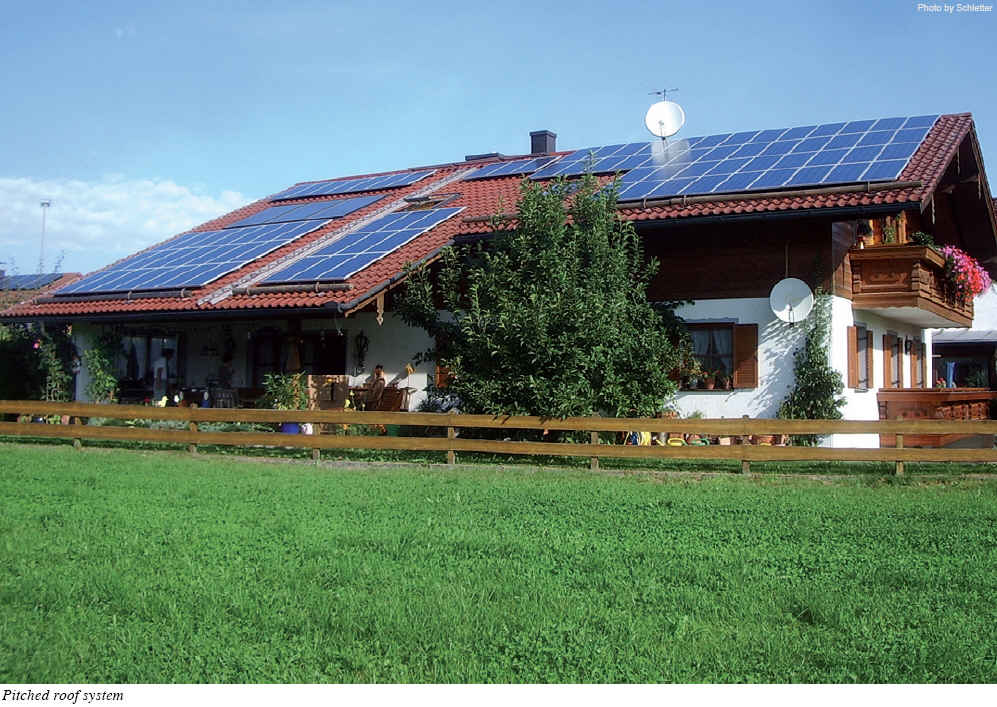
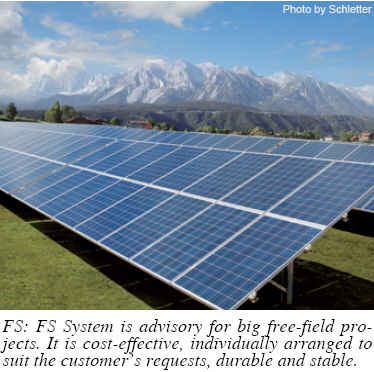 What market applications do your products have? What market applications do your products have?
Our main lines of production are free-field, flat roof and pitched roof systems, but we also produce individually designed products if our customer requires an extraordinary solution. Furthermore, we offer specific solutions for the different types of modules there are on the market.
Compared to system suppliers we have a very wide range of products which enables us to deal with any mounting specific problem. But we are not restricted to the components we offer presently but constantly try to enlarge our range of products depending on the requirements of our customers.
One size does not fit all when it comes to solar racking systems. Are there any differences in product requirements for different applications?
Yes, there are. Basically every situation demands an individual approach.
Industrial houses, for example, are often built with a flat roof. In that case, ISO Top could be a common system. It is used if industrial foil roofs cannot be loaded with any more weight. Here, beams arranged in large distances transmit the load of the system directly into the inner building.
Windsafe is another popular system for flat roofs. As the strength of wind load is a big issue in every installation, this system reduces the pressure of this force by closing the angle of the elevation.
Compact Vario in comparison is often used for trapezoidal sheet metal roofs to optimize fixation points.
Pitched roofs are very common for residential houses in Germany. Often they are covered with tiles. For fixation of the installation on tiles special assembling is required. Tiles, for example, were not intended to withstand the weight of a solar energy system when they have been used originally. In this case we would often recommend using Rapid 2+, especially suitable for tiled roofs.
On open areas we recommend our free-field systems PV Max3 or FS depending on the size of the project and soil consistency.
FS System is advisory for big free-field projects. It is cost-effective, individually arranged to suit the customer’s requests, durable and stable. Due to evaluation of customer and country specific data, special designed steel poles are being rammed into the soil using modern engineering software in order to guarantee for optimized arrangement of the poles and reduce assembling times and therefore production costs of the project.
PV Max 3 is used wherever ramming is not economical or not possible due to the size of the project or inadvisable after soil analysis tests have designated an unfeasible soil composition. Here, concrete foundations are being used instead to stabilize the system.
This is only a brief selection of different racking systems we have on stock. This list is by no means complete.
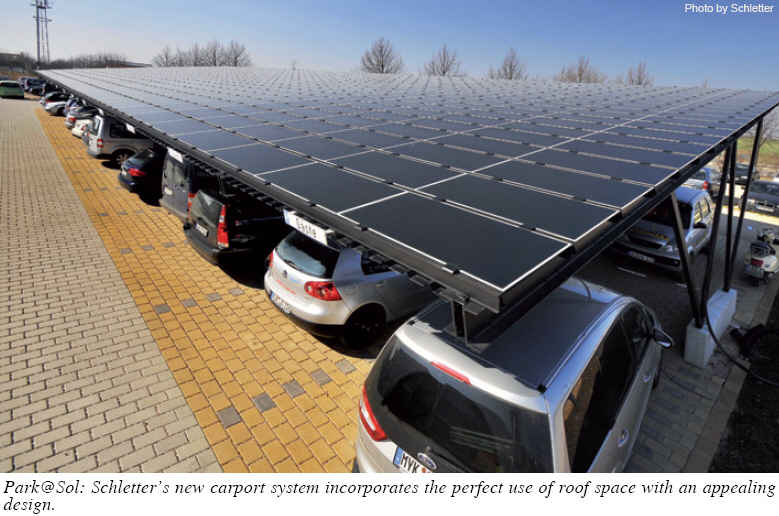
Do you have any new products being introduced this year?
.jpg) As we constantly seek to enlarge our range of products we have a lot of innovations in store. I will point out just a small selection of our new products. As we constantly seek to enlarge our range of products we have a lot of innovations in store. I will point out just a small selection of our new products.
We invented a new system to reduce the weight that is working on the roof and installation systems to shorten and ease mounting times on flat and trapezoidal sheet metal roofs. Many applications are preassembled in the factory and therefore provide advantages in storage and delivery times.
Our new carport system incorporates the perfect use of roof space with an appealing design. In the future, this can be combined with our P. Charge system, a charging system for electrical vehicles f. e. when introducing E-mobile fleets in a company.
Following the attempt of the German government to support the integration of alternative energies in communal life, we developed PV lighting systems for German infrastructure. Other countries are very interested in this project as well.
In general, our focus in research lies on the reduction of mounting times by offering easy applications, the reduction of weight acting on the roof and competent training of our customers because even good quality material has limited value when it is improperly fixed. For that reason, Schletter started to organize professional mounting seminars and events where our skilled staff trains customers in proper fixing of our material in order to avoid accidents and thereby prolong the life of applications.
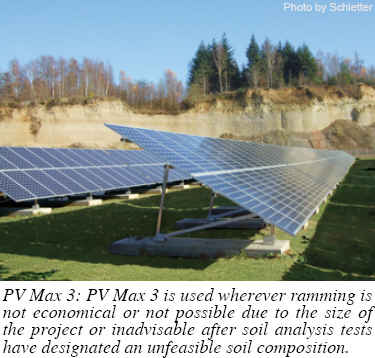 What is your prediction for the solar industry this year? What is your prediction for the solar industry this year?
Generally the attraction of solar energy in the context of a rising environmental awareness, the overall wish for political independence to supplier countries of fossil fuels and the immense governmental support of our technology allow us to look positive into the future.
According to your question, I can say that we always believed in the great potential of the Asian market which is why we are presently consolidating our presence there with subsidiaries in South Korea and China. And for this year in particular, we believe that the Asian interest in solar industry will rise even more.
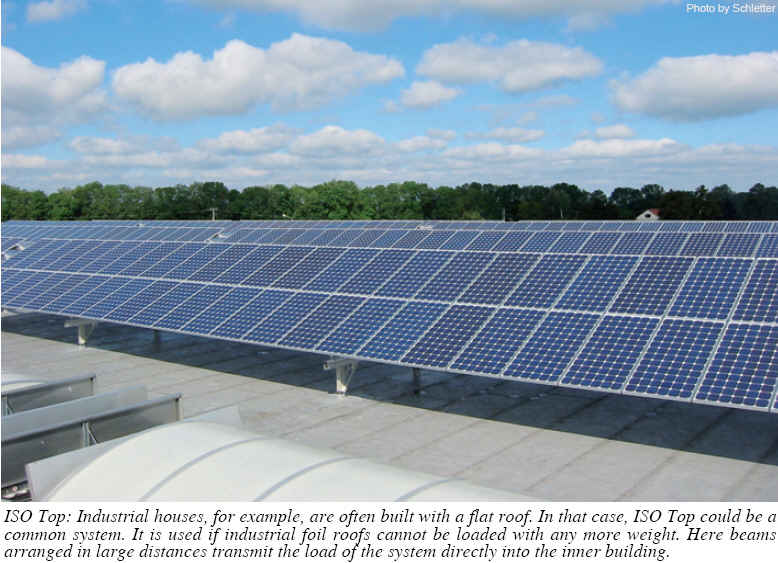
What are some of the major challenges for Schletter going forward?
The quality standard we guarantee to our customers when buying our products is an everyday challenge.
Jeanny Lim is Editor-in-Chief of InterPV. Send your comments to swied@infothe.com.
For more information, please send your e-mails to pved@infothe.com.
ⓒ2010 www.interpv.net All rights reserved.
|



